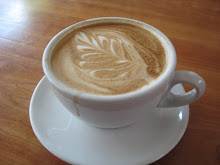When the weather turns cold (as it did just recently), it always puts me in the mood for a bowl of steaming hot noodles. It just so happened that I was craving ramen. Not the packaged ramen that sells 10 for $1, but real homemade ramen in real broth. So we went to Daikokuya, which is located on 1st Street in Little Tokyo in Downtown Los Angeles. They are known for making great ramen, and if you feel like going there, let me just share a piece of advice: go early. It is a small restaurant, and there is always a lunch crowd that goes out the door.
Daikokuya offers traditional, quality Japanese fare at somewhat reasonable prices. One can expect to order the usual teriyaki or tempura combinations, as well as some sushi-type selections. Most people order the Daikoku Ramen, noodles in steaming hot broth served with a hard boiled egg, pieces of karabuto pork, fresh bean sprouts, seasoned bamboo shoots, and lots of scallions. According to the restaurant, it is unique for three reasons: 1) because the broth is made from boiling pork bones for a full day to achieve maximum flavor; 2) they use karabuto pork, which is known for its unique flavor and tenderness; and 3) the eggs are soaked overnight in special seasonings to enhance the soup. For a little variety, try the Ramen Tsukemen, which is the same thing, except the noodles and ingredients are served cold in a separate dish with the bowl of hot broth.
Now I'm not typically a ramen fan, but I will admit that this is good comfort food. It leaves you feeling full, satisfied and warm. What I liked best about it was how the noodles were cooked. There's just something about a perfectly-cooked noodle soup dish that brings the feeling of satisfaction. I always order it without scallions because I don't like them, and they happen to put A LOT of scallions for garnish... well, for flavor too, I suppose. Below are pictures of the Daikoku Ramen, one with the scallions, and one without. See what I mean about lots of scallions?
We also ordered the gyoza, which are essentially fried potstickers served with some type of dipping sauce. They were good, except for the heaping mound of scallions on top. I personally prefer the Chinese potstickers. So with that said, here is a photo of the gyoza:

Adventures of a wannabe foodie here, there, and everywhere.
Latest Adventures
About Me

- slyfoodie
- A lover of all things food, whether it be from the finest restaurant to the humblest of home kitchens. This is simply my outlet to express my thoughts on beautiful and tasty food.
Labels
- Anaheim (1)
- Arcadia (1)
- Baking (1)
- Brea (1)
- Breakfast (1)
- Burbank (1)
- Century City (1)
- Chino (3)
- Chino Hills (10)
- Costa Mesa (1)
- Downtown LA (16)
- Food Tour (1)
- Food Trucks (2)
- Glendora (1)
- Hollywood (2)
- Home Cooking (8)
- Inland Empire (1)
- Koreatown (1)
- LasVegas (3)
- Little Tokyo (8)
- Newport Beach (1)
- Ontario (1)
- Orange County (2)
- Pasadena (7)
- Rancho Cucamonga (1)
- Rowland Heights (3)
- San Gabriel Valley (2)
- San Marino (1)
- Seattle (11)
- Silver Lake (2)
- South Pasadena (1)
- Top Chef (6)
- West Covina (1)
- West Hollywood (4)
- West LA (1)
Blog Archive
The SLY Foodie
Converted by www.bloggertemplateplace.com
Powered by : Blogger | Theme by : Best Recipes and Chicken Recipes


